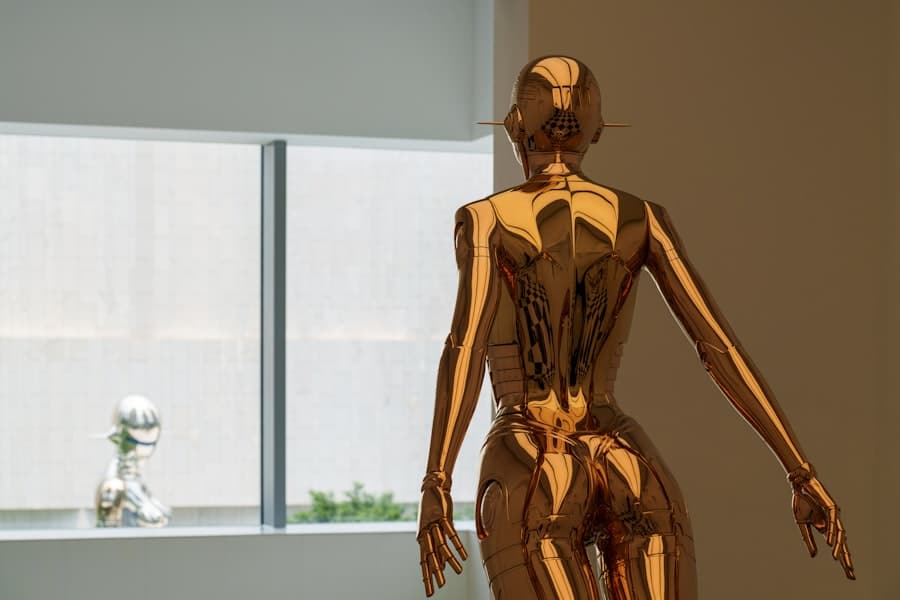Exoskeletons, often depicted in science fiction, have transitioned from the realm of imagination into tangible reality, revolutionizing various fields such as medicine, military, and industrial applications. These wearable robotic devices are designed to augment human capabilities, providing support and enhancing physical performance. By mimicking the structure and function of the human body, exoskeletons can assist individuals with mobility impairments, reduce fatigue in labor-intensive jobs, and even enhance the physical abilities of soldiers on the battlefield.
The growing interest in exoskeleton technology is driven by advancements in robotics, materials science, and artificial intelligence, which have made these devices more efficient, lightweight, and user-friendly. The concept of exoskeletons is not entirely new; historical references can be traced back to the 1960s when early prototypes were developed for military applications. However, it is only in recent years that significant strides have been made in their design and functionality.
Today’s exoskeletons are equipped with sophisticated sensors and actuators that allow for real-time feedback and adaptability to the user’s movements.
Key Takeaways
- Exoskeletons are wearable robotic devices designed to enhance human performance and assist with physical tasks.
- The science behind exoskeletons involves the use of sensors, actuators, and control systems to mimic and enhance human movement.
- Exoskeleton technology has applications in healthcare, military, construction, and manufacturing industries, among others.
- Benefits of exoskeletons include reduced physical strain, increased strength and endurance, and improved safety for users.
- Challenges and limitations of exoskeletons include cost, weight, limited battery life, and the need for further research and development.
The Science Behind Exoskeletons
At the core of exoskeleton technology lies a complex interplay of biomechanics, robotics, and control systems. Biomechanics provides the foundational understanding of human movement, allowing engineers to design exoskeletons that effectively replicate or enhance natural motion. By studying how muscles, joints, and bones interact during various activities, researchers can create devices that not only support but also amplify human strength and endurance.
For instance, an exoskeleton designed for lifting heavy objects must account for the biomechanics of the human spine to prevent injury while maximizing lifting efficiency. Robotics plays a crucial role in the functionality of exoskeletons. Modern exoskeletons utilize a combination of electric motors, hydraulic systems, and pneumatic actuators to facilitate movement.
These components work in tandem with sensors that detect the user’s intentions—such as bending a knee or lifting an arm—allowing the device to respond accordingly. Advanced algorithms process this data in real-time, ensuring that the exoskeleton moves in harmony with the user’s natural motions. This synergy between human and machine is essential for creating a seamless experience that feels intuitive rather than mechanical.
Applications of Exoskeleton Technology

Exoskeleton technology has found diverse applications across multiple sectors, each leveraging its unique capabilities to address specific challenges. In healthcare, exoskeletons are increasingly used for rehabilitation purposes. Patients recovering from spinal cord injuries or strokes can benefit from these devices as they assist with mobility training and muscle re-education.
For example, the EksoGT exoskeleton has been employed in physical therapy settings to help patients regain their ability to walk by providing support and stability during gait training sessions. In industrial environments, exoskeletons are being adopted to reduce workplace injuries and enhance productivity. Workers engaged in repetitive tasks or heavy lifting can wear these devices to alleviate strain on their bodies.
Companies like Ford have implemented exoskeletons in their assembly lines to help workers lift heavy components without risking musculoskeletal injuries. This not only improves worker safety but also increases efficiency by allowing employees to perform tasks with less fatigue over extended periods. Military applications also showcase the potential of exoskeleton technology.
The U.S. Army has explored various prototypes designed to enhance soldiers’ strength and endurance during missions. These military-grade exoskeletons can enable soldiers to carry heavier loads over longer distances while reducing fatigue and improving overall performance in challenging environments.
The Tactical Assault Light Operator Suit (TALOS) is one such initiative aimed at providing soldiers with enhanced physical capabilities while also integrating protective features.
Benefits of Exoskeletons for Human Performance
The benefits of exoskeletons extend beyond mere physical enhancement; they also encompass psychological and social dimensions. For individuals with mobility impairments, exoskeletons can significantly improve quality of life by restoring independence and mobility. The ability to stand upright and walk again can have profound effects on a person’s mental health, fostering a sense of agency and self-worth that may have been lost due to injury or illness.
This psychological uplift is particularly evident in rehabilitation settings where patients experience renewed hope and motivation as they regain mobility through the assistance of exoskeletons. In industrial settings, the implementation of exoskeletons can lead to increased productivity and reduced absenteeism due to injuries. By minimizing physical strain on workers, companies can create a safer work environment that promotes employee well-being.
This not only enhances job satisfaction but also contributes to lower healthcare costs associated with workplace injuries. Furthermore, as industries face labor shortages in physically demanding roles, exoskeletons can serve as a solution by enabling older workers or those with physical limitations to remain active participants in the workforce.
Challenges and Limitations of Exoskeletons
Despite their promising potential, exoskeletons face several challenges that hinder widespread adoption and effectiveness. One significant limitation is the cost associated with developing and manufacturing these devices. High-quality exoskeletons often come with a hefty price tag, making them inaccessible for many individuals and organizations.
This financial barrier can limit their use in rehabilitation centers or small businesses that could greatly benefit from their capabilities. Another challenge lies in the complexity of user adaptation. While exoskeletons are designed to assist human movement, they require users to undergo training to effectively operate them.
This learning curve can be particularly steep for individuals with severe mobility impairments or those who have not engaged in physical activity for an extended period. Additionally, issues related to comfort and fit must be addressed; poorly designed exoskeletons can cause discomfort or even exacerbate existing conditions if not tailored to individual users.
Current Research and Development in Exoskeleton Technology

The field of exoskeleton technology is rapidly evolving, with ongoing research focused on improving functionality, comfort, and accessibility. Researchers are exploring advanced materials such as lightweight composites and smart textiles that can enhance the performance of exoskeletons while reducing their weight. Innovations in battery technology are also critical; longer-lasting power sources are essential for making exoskeletons practical for extended use without frequent recharging.
Moreover, interdisciplinary collaboration is driving advancements in control systems that allow for more intuitive operation of exoskeletons. Brain-computer interfaces (BCIs) are being investigated as a means to enable users to control exoskeleton movements through thought alone. This groundbreaking approach could revolutionize how individuals with severe disabilities interact with their environment, providing unprecedented levels of independence.
Ethical and Social Implications of Exoskeleton Use
The integration of exoskeleton technology into society raises important ethical considerations that must be addressed as these devices become more prevalent. One major concern revolves around equity and access; as with many advanced technologies, there is a risk that only affluent individuals or organizations will benefit from exoskeletons while marginalized groups may be left behind. Ensuring equitable access to these life-enhancing devices is crucial for fostering inclusivity in rehabilitation and workplace settings.
Additionally, there are implications related to privacy and autonomy. As exoskeletons become more integrated with digital technologies—such as data collection for performance monitoring—questions arise about who owns this data and how it is used. Users must be informed about potential privacy concerns while also being empowered to make choices regarding their data management.
Furthermore, as exoskeletons enhance human capabilities, society must grapple with the implications of augmented humans versus those who do not have access to such technologies.
The Future of Exoskeletons and Human Performance
Looking ahead, the future of exoskeleton technology holds immense promise for transforming human performance across various domains. As research continues to advance, we can expect more sophisticated designs that seamlessly integrate with human physiology while offering enhanced functionalities tailored to specific needs. The potential for personalized exoskeletons—customized based on individual biomechanics—could lead to breakthroughs in rehabilitation outcomes and workplace safety.
Moreover, as societal attitudes toward disability and enhancement evolve, we may witness a shift in how exoskeletons are perceived within communities. Rather than being viewed solely as assistive devices for those with disabilities, they could become mainstream tools for enhancing human capabilities across all demographics. This paradigm shift could redefine notions of ability and performance, paving the way for a future where technology empowers individuals to achieve their fullest potential regardless of physical limitations.
In conclusion, the journey of exoskeleton technology is just beginning, with ongoing innovations poised to reshape our understanding of human performance and capability enhancement. As we navigate the challenges and ethical considerations associated with this technology, it is essential to foster an inclusive dialogue that prioritizes accessibility and equity while embracing the transformative potential of exoskeletons in our lives.
In the realm of technological advancements aimed at enhancing human capabilities, exoskeletons are gaining significant attention for their potential to augment human performance. These wearable devices are designed to support and amplify the physical abilities of the wearer, offering promising applications in various fields such as healthcare, military, and industrial sectors. A related article that delves into the technological innovations in a different domain is What is Special About the iPhone 14 Pro. This article explores the cutting-edge features of the iPhone 14 Pro, highlighting how advancements in technology continue to push the boundaries of what is possible, much like the development of exoskeletons.
FAQs
What is an exoskeleton?
An exoskeleton is a wearable device that is designed to enhance the physical capabilities of the wearer. It is typically made of rigid materials such as metal or carbon fiber and is worn externally on the body.
How does an exoskeleton enhance human performance?
Exoskeletons can enhance human performance by providing additional strength, endurance, and support to the wearer. They can assist with lifting heavy objects, reducing fatigue, and improving overall physical capabilities.
What are the potential applications of exoskeleton technology?
Exoskeleton technology has a wide range of potential applications, including military, industrial, medical, and rehabilitation settings. It can be used to assist soldiers in carrying heavy loads, help workers with repetitive tasks, aid individuals with mobility impairments, and support patients in physical therapy.
Are there any limitations to exoskeleton technology?
While exoskeleton technology has advanced significantly, there are still limitations to consider. These may include cost, weight, power source, and adaptability to different body types and movements.
What are the current challenges in the development of exoskeleton technology?
Some of the current challenges in the development of exoskeleton technology include improving energy efficiency, reducing the weight and bulkiness of the devices, and ensuring seamless integration with the wearer’s movements. Additionally, there is ongoing research to address safety concerns and optimize user experience.

